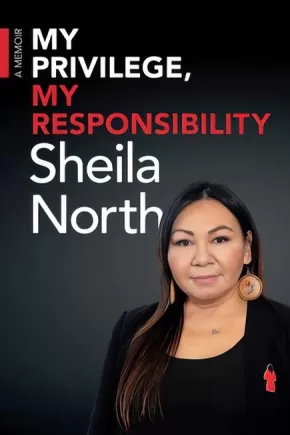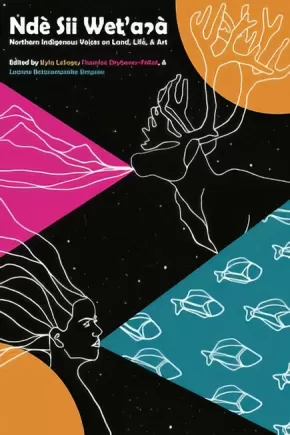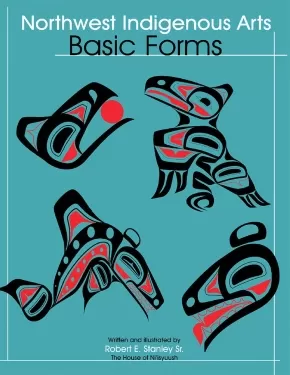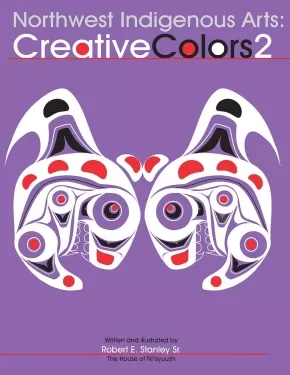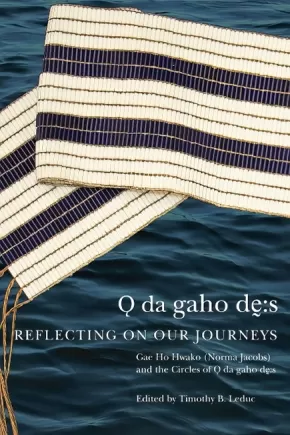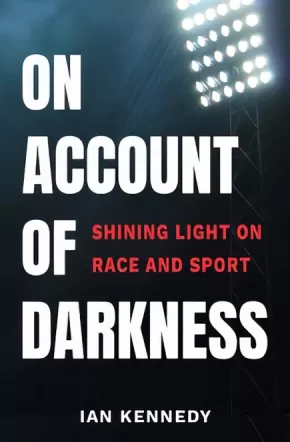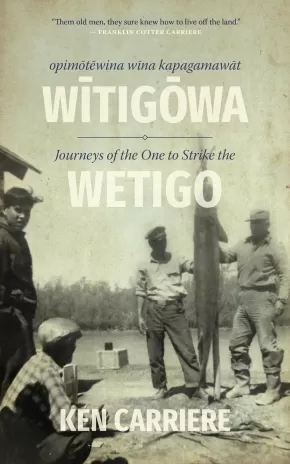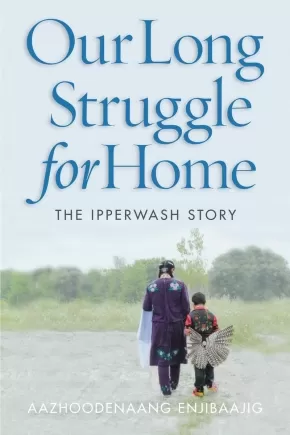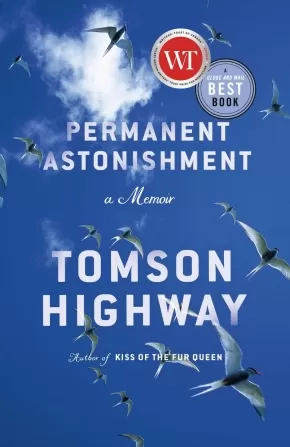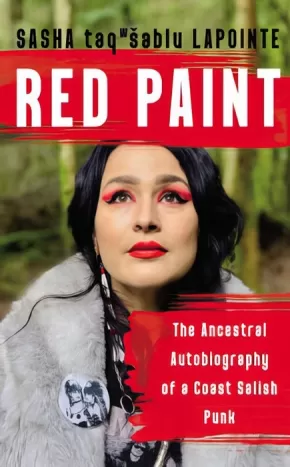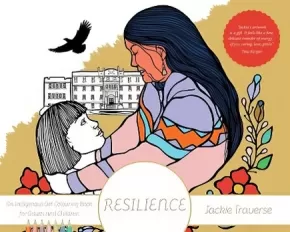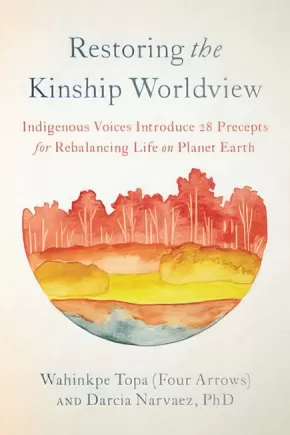
Non-Fiction
196
-
210
of
748 Results;
Sort By
Go To
of 50
My Privilege, My Responsibility: A Memoir
$24.95
Format:
Paperback
Text Content Territories:
Indigenous Canadian; First Nations; Cree (Nehiyawak); Woodland Cree; Rocky Cree; Bunibonibee Cree Nation ;
Reading Level: N/A
ISBN / Barcode: 9781773370668
Synopsis:
Synopsis:
In September 2015, Sheila North was declared the Grand Chief of Manitoba Keewatinowi Okimakanak (MKO), the first woman elected to the position. Known as a “bridge builder”, North is a member of Bunibonibee Cree Nation. North’s work in advocacy journalism, communications, and economic development harnessed her passion for drawing focus to systemic racism faced by Indigenous women and girls. She is the creator of the widely used hashtag #MMIW. In her memoir, Sheila North shares the stories of the events that shaped her, and the violence that nearly stood in the way of her achieving her dreams. Through perseverance and resilience, she not only survived, she flourished.
Additional Information
232 pages | 6.00" x 9.00" | Paperback
Nahganne: Tales of the Northern Sasquatch (3 in Stock)
$35.00
Format:
Paperback
Text Content Territories:
Indigenous Canadian;
Reading Level: N/A
ISBN / Barcode: 9781988824598
Synopsis:
Synopsis:
Nahganne: Tales of the Northern Sasquatch is about giant bipedal, forest dwelling, hirsute hominoid entities. For as long as humans have been around the North, the activities of these giants have been observed in many places, but only a few people have taken the time to share their stories of coming in contact with these forest giants. In the North they have been given many regional names; although they are commonly known as Nahganne or Sasquatch. The book presents activities occurring in the North such as sightings, strange vocals, discovery of large human-liked footprints, strange animal reaction, and weird tree events. It also contains bits of history about northern North America plus details about the First Nation Peoples and their history. In the book, Red Grossinger investigates and analyses the many reports that he has received with details about the encounters and occurrences.
Reviews
"A tale as old as the North. We’ve heard of Nahganne for many generations. The North is under-explored and we don’t know what’s out there. " —Lawrence Nayally, CBC North
"As an academic I appreciated the scientific analyses of the various Sasquatch sightings and the attention paid to details. As a First Nations person I enjoyed the storytelling qualities and humanistic approach of the book. Even though I have delved into the topic at various times myself, I have been surprised by how many sighting there have been! I have friends and family that have seen the Sasquatch, and this book assures that many of the stories won’t be lost through time. I applaud Mr. Grossinger for adding an important aspect of Yukon people’s experiences to local history." — Ukjese van Kampen PhD
"Red Grossinger has put together an enthusiastic and insightful inspection of Nahganne or the Northern Sasquatch using intriguing real-life examples, many of which he investigated himself. He believes Nahganne is scientifically “obvious” and details a history of research and encounters that date back more than a century. His only request of readers is to keep an open mind. When you finish this book, perhaps you too will believe." — John Firth, author of The Caribou Hotel: Hauntings, hospitality, a hunter and the parrot and One Mush: Jamaica's Dogsled Team
Additional Information
288 pages | 6.00" x 9.00" | 15 b&w illustrations | Paperback
288 pages | 6.00" x 9.00" | 15 b&w illustrations | Paperback
Namwayut - We Are All One: A Pathway to Reconciliation
$29.95
Format:
Hardcover
ISBN / Barcode: 9781774580059
Synopsis:
Synopsis:
We all share a common humanity. No matter how long or difficult the path ahead, we are all one.
Reconciliation belongs to everyone. In this profound book, Chief Robert Joseph, globally recognized peacebuilder and Hereditary Chief of the Gwawaenuk People, traces his journey from his childhood surviving residential school to his present-day role as a leader who inspires individual hope, collective change, and global transformation.
Before we get to know where we are going, we need to know where we came from. Reconciliation represents a long way forward, but it is a pathway toward our higher humanity, our highest selves, and an understanding that everybody matters. In Namwayut, Chief Joseph teaches us to transform our relationships with ourselves and each other. As we learn about, honour, and respect the truth of the stories we tell, we can also discover how to dismantle the walls of discrimination, hatred, and racism in our society.
Chief Joseph is known as one of the leading voices on peacebuilding in our time, and his dedication to reconciliation has been recognized with multiple honorary degrees and awards. As one of the remaining first-language speakers of Kwak'wala, his wisdom is grounded in Indigenous ways of knowing while making space for something bigger and better for all of us.
Additional Information
200 pages | 5.25" x 8.00" | Hardcover
Ndè Sii Wet'aà: Northern Indigenous Voices on Land, Life, & Art
$24.00
Format:
Paperback
Text Content Territories:
Indigenous Canadian; Inuit; Inuvialuit (Mackenzie Inuit); First Nations; Tutchone; Northern Tutchone; Dene; Tlicho (Dogrib); South Slavey (Deh Cho); North Slavey (Sahtu); Kaska Dena (Denek’eh); Denesuline (Chipewyan); Sayisi Dene; Cree (Nehiyawak); Métis; Indigenous American; Alaska Native; Dena?ina (Tanaina); Alutiiq (Sugpiaq);
Grade Levels: 12; University/College;
ISBN / Barcode: 9781927886625
Synopsis:
Synopsis:
Ndè Sii Wet'aà: Northern Indigenous Voices on Land, Life, & Art is a collection of essays, interviews, short stories and poetry written by emerging and established northern Indigenous writers and artists. Centred on land, cultural practice and northern life, this ground-breaking collection shares wealth of Dene (Gwichʼin, Sahtú, Dehcho, Tłı̨chǫ, Saysi, Kaska, Dënesuiné, W?ìl?ìdeh ) Inuit, Alutiiq, Inuvialuit, Métis, Nêhiyawak (Cree), Northern Tutchone, and Tanana Athabascan creative brilliance. Ndè Sii Wet'aà holds up the voices of women and Two Spirit and Queer writers to create a chorus of voices reflecting a deep love of Indigenous cultures, languages, homelands and the north. The book includes a series of pieces and interviews from established northern artists and musicians including Leela Gilday, Randy Baillargeon (lead singer for the W?ìl?ìdeh Drummers), Inuit sisters, song-writers and throat singers Tiffany Ayalik and Inuksuk Mackay of Piqsiq, Two Spirit Vuntut Gwitchin visual artist Jeneen Frei Njootli, Nunavik singer-songwriters Elisapie and Beatrice Deere and visual artist Camille Georgeson-Usher. Ndè Sii Wet'aà also includes writing from well-known northern writers Siku Allooloo, T'áncháy Redvers (Fireweed), Antione Mountain (From Bear Rock Mountain), Glen Coulthard (Red Skin, White Masks), Catherine Lafferty (Northern Wildflower, Land-Water-Sky) and Lianne Marie Leda Charlie, in amongst the best emerging writers in the north.
Additional Information
264 pages | 6.00" x 9.00" | Paperback
Northwest Indigenous Arts: Basic Forms
$12.95
Artists:
Format:
Paperback
Text Content Territories:
Indigenous Canadian; First Nations;
ISBN / Barcode: 9780888395061
Synopsis:
Synopsis:
Learn to draw Native Art! First Nations artist Robert E. Stanley Sr. shares his knowledge and technique in rendering classic northwest native drawings. Now you too, can learn to draw some of the legendary animals of the First Nations tribes, by learning Robert's techniques passed down to him from generation to generation.
Additional Information
64 pages | 8.50" x 11.00"
Northwest Indigenous Arts: Creative Colors 1
$7.95
Artists:
Format:
Paperback
Text Content Territories:
Indigenous Canadian; First Nations; Nisga'a;
Reading Level: N/A
ISBN / Barcode: 9780888395320
Synopsis:
Synopsis:
Learn about some of the real and legendary creatures revered by the natives of the west coast by using these templates to create spectacular pictures. The first coloring book in the Northwest Native Arts Series. Learn about some of the real and legendary creatures revered by the natives of the west coast by using these templates to create spectacular pictures.
Educator & Series Information
This is the second book in the Northwest Native Art Series.
Includes templates / designs for Owl, Killer Whale, Wolf, Frog, Eagle, Moon, Grizzly Bear, Sun, Black Bear, Raven, Male Salmon, Female Salmon, Beaver, Diving Frog, Face in an Ovoid, The Split-Frog, The Rave and the Sun, The Wild Man of the Forest, The Hawk, The Prayer, The Flying Frog, The Robin and the Twig, Kingfisher, Crab, Timber Wolf, Lizard, and Split-Killer Whale, along with traditional teachings and knowledge about each one.
Color in these designs using pen, pencil, crayons or paints. You can choose which colors to use, color them any colors you like, but keep in mind that the traditional colors are red and black. Blue or turquoise blue is sometimes used around the eye and around the inside u-shape fillers.
This colouring book could work with younger and older children.
Additional Information
32 pages | 8.50" x 11.00" | Paperback
Northwest Indigenous Arts: Creative Colors 2
$5.95
Artists:
Format:
Paperback
Text Content Territories:
Indigenous Canadian; First Nations; Nisga'a;
Reading Level: N/A
ISBN / Barcode: 9780888395337
Synopsis:
Synopsis:
The second coloring book in the Northwest Native Arts Series. Learn about some of the real and legendary creatures revered by the natives of the west coast by using these templates to create spectacular pictures.
Educator & Series Information
This book would work best with older children or teens.
This is the second book in the Northwest Native Art Series.
Table of Contents
Acknowledgements
Introduction
Basic Shapes
How to make an ovoid
Making the two inside ovoids
The basic U-shape
The U-shape form line for ears, nose and beak
The split U-shape filler design
The L-shape, S-shape and cheek filler designs
Claw designs
Samples of basic eye designs
The basic teeth and tongue designs
The basic head form line
A basic wing form line
A basic tail form line
The Basic Steps for Drawing a First Nations Wolf and Other Designs
The ovoids
Starting the Wolf design
Adding the nose form lines
Placing the ear and forearm ovoid form lines
Placing the forearm U-shape, claw and claw connector
Connecting the forearm to the head and setting the hind leg ovoids
Adding the hind leg U-shape form line and claw
Connecting the forearm to the hind leg
Drawing the upturned tail of the Wolf
Placing the teeth, tongue and filler designs
The Bear
The Frog
The Basic Steps for Drawing a First Nations Eagle Design
The ovoids
Starting the Eagle design
Adding the beak and the ear U-shape form lines
Placing the wing ovoids and the wing U-shapes
Connecting the head to the wing
Adding the wing feather tips
Placing the tail ovoids and adding the U-shape form line
Connecting the tail to the wing and adding the tail feather tips
Adding the claw and connecting it to the tail
Adding the black thin lines and U-shape fillers
The Raven
How to Draw the Killer Whale
Drawing the Killer Whale
Placing the filler designs
Four Creat Tracing
Introduction and instructions
The Eagle, Killer Whale, Wolf and Raven
Four creat head puzzles
The Killer Whale, Wolf, Raven and Eagle
Native Arts Colouring
The Eagle, Killer Whale, Frog and Wolf
Additional Information
24 pages | 8.50" x 11.00" | Paperback
Odagahodhes: Reflecting On Our Journeys
$37.95
Format:
Hardcover
Text Content Territories:
Indigenous Canadian; First Nations; Haudenosaunee (Iroquois); Cayuga;
Reading Level: N/A
ISBN / Barcode: 9780228011972
Synopsis:
Synopsis:
A transformative journey, guided by Elders’ teachings, that prompts reflection on the values that foster good relations.
In the words of Cayuga Elder Gae Ho Hwako Norma Jacobs: “We have forgotten about that sacred meeting space between the Settler ship and the Indigenous canoe, Odagahodhes, where we originally agreed on the Two Row, and where today we need to return to talk about the impacts of its violation.”
Odagahodhes highlights the Indigenous values that brought us to the sacred meeting place in the original treaties of Turtle Island, particularly the Two Row Wampum, and the sharing process that was meant to foster good relations from the beginning of the colonial era. The book follows a series of Indigenous sharing circles, relaying teachings by Gae Ho Hwako and the responses of participants - scholars, authors, and community activists - who bring their diverse experiences and knowledge into reflective relation with the teachings. Through this practice, the book itself resembles a teaching circle and illustrates the important ways tradition and culture are passed down by Elders and Knowledge Keepers. The aim of this process is to bring clarity to the challenges of truth and reconciliation. Each circle ends by inviting the reader into this sacred space of Odagahodhes to reflect on personal experiences, stories, knowledge, gifts, and responsibilities.
By renewing our place in the network of spiritual obligations of these lands, Odagahodhes invites transformations in how we live to enrich our communities, nations, planet, and future generations.
Reviews
“This book is a testament to the power of respectful, collaborative thinking and the merging of Indigenous intellectual tradition with a Western academic approach. It is engaging, deeply thoughtful, sincere, and uplifting, exactly the kind of work that is needed now to assist in the rebuilding of relationships amongst, and between, Indigenous communities and non-Indigenous Canadians.” - Rick Monture, Six Nations of the Grand River / McMaster University
Additional Information
336 pages | 6.00" x 9.00" | Hardcover
On Account of Darkness: Shining Light on Race and Sport
$21.95
Format:
Paperback
Text Content Territories:
Indigenous Canadian;
Reading Level: N/A
ISBN / Barcode: 9781990160103
Synopsis:
Synopsis:
For marginalized athletes past and present, achievement can bring celebrity without equality and recognition without opportunity.
In many ways, Ontario’s Chatham-Kent region is a microcosm of Canadian multiculturalism. As a terminus of the Underground Railroad, it has long been home to a large Black community, Walpole Island and Delaware First Nations are nearby, and many interned Japanese Canadians worked on local farms during World War II. The history of sport in the region is emblematic of the challenges that have confronted generations of non-white athletes nationwide. Each chapter uses the story of a local athlete—some famous, others more obscure—to illuminate one aspect of the evolving relationship between race and sport in North America. Combining tales of personal triumph with sports history and social commentary, On Account of Darkness examines systemic racism and ambivalent attitudes that persist to this day.
Additional Information
256 pages | 5.50" x 8.50" | Paperback
Opimōtēwina wīna kapagamawāt Wītigōwa / Journeys of The One to Strike the Wetigo
$24.95
Format:
Paperback
Text Content Territories:
Indigenous Canadian; First Nations; Cree (Nehiyawak); Swampy Cree ; Woodland Cree; Rocky Cree; Peter Ballantyne Cree Nation;
Grade Levels: 12; University/College;
ISBN / Barcode: 9780889779044
Synopsis:
Synopsis:
A first-hand account of a Swampy Cree boy’s experiences growing up in the Saskatchewan River Delta, one of the world’s largest inland deltas and one of North America’s most important ecosystems.
Depicting an Indigenous lifestyle that existed in Northern Saskatchewan way past the Fur Trade era, Ken Carriere shares his first-hand account of experiences as a young boy helping his father trapping, fishing, and hunting in the Saskatchewan River Delta.
Opimōtēwina wīna kapagamawāt Wītigōwa / Journeys of The One to Strike the Wetigo contains interviews with elders, stories, personal photographs, and poetry, along with some original Swampy Cree translations.
Creating a vivid portrait of what it was like to live off the land, Carriere also reveals how hydro-electric dams and other Western endeavours have impacted the livelihoods of so many Northern communities.
Reviews
"Wow! This is an excellent resource for those engaged in, or interested in, land-based education. It gives a wonderful, engaging account of living on the land in the past and, to some extent, in the present day. It's also a good resource for N-dialect speakers." —Solomon Ratt, author of The Way I Remember and Beginning Cree
Additional Information
328 pages | 5.00" x 8.00" | Paperback
Our Long Struggle for Home: The Ipperwash Story
$24.95
Format:
Paperback
Text Content Territories:
Indigenous Canadian; First Nations; Anishinaabeg; Ojibway; Chippewas of Kettle and Stony Point First Nation;
Reading Level: N/A
ISBN / Barcode: 9780774890571
Synopsis:
Synopsis:
Most Canadians know only a tiny part of the Ipperwash story – the 1995 police shooting of Dudley George. In Our Long Struggle for Home, George’s sister, cousins, and others from the Stoney Point Reserve tell of broken promises and thwarted hopes in the decades-long battle to reclaim their ancestral homeland, Aazhoodena, both before and after the police action culminating in George’s death.
Offering insights into Nishnaabeg lifeways and historical treaties, this compelling account conveys how government decisions have affected lives, livelihoods, and identity. We hear of the devastation wrought by forcible eviction when the government re-purposed Nishnaabeg ancestral territory as an army training camp in 1942, promising to return it after the war. By May 1993, the elders had waited long enough. They entered the still-functioning training camp, under cover of a picnic outing, and constituted themselves as the interim government of the reclaimed Stoney Point Reserve. The next two years brought cultural and social revival, though it was ultimately quashed as an illegal occupation.
Our Long Struggle for Home also shows what can be accomplished through perseverance and undiminished belief in a better future. This is a necessary lesson on colonialism, the power of resistance, persistence, and the possibilities inherent in recognizing treaty rights.
This is an important read for anyone who seeks a better understanding of the continuing influence of Canada’s colonial history and the injustices that Indigenous people have faced, and is a story that will inspire the Indigenous youth of today. It belongs in schools, public libraries, and reserves.
Reviews
"Our Long Struggle for Home is a beautiful articulation of Nishnaabeg world building and the deep relationality that is our practice to make and remake home. The Azhoodenaang Enjibaajig have gifted us the stories of their struggle to live as Nishnaabeg in their homeland and teach us how to live together in a way that brings forth more life." — Leanne Betasamosake Simpson, author of Noopiming: The Cure for White Ladies
"This is an incredible story about resistance and truth. Our Long Struggle for Home is critically important to the discussion about healing and reconciliation because it brings some clarity to what is taking place in Canada. It is brilliant in its simplicity." — Jerry Fontaine, former chief of the Sagkeeng First Nation
"This excellent book captures the honesty, dignity, and resilience of the Nishinaabe people involved in reclaiming their homeland at Stoney Point. It’s the first time the Ipperwash story has been told from their perspective; it’s a substantial contribution." — Justice Sidney B. Linden, commissioner for the Ipperwash Inquiry
"Our Long Struggle for Home is an excellent book of public education. It illustrates the havoc wreaked on Indigenous communities and complex outcomes of systemic poverty, frustration, and injustice. Through beautiful, and at times devastating, stories, it also offers powerful examples of healing, nourishment, and restoration." — Nicole Latulippe, assistant professor, Geography and Environmental Studies, University of Toronto Scarborough
Educator Information
Table of Contents
Foreword / John Borrows
Maps
Genealogy
Introduction
1 No Word for Surrender
2 “The House Was Gone”
3 Disruption and Determination
4 Under Cover of Prayer Meetings
5 Burying the Hatchet under a Peace Tree
6 Peacekeepers and Nation Builders
7 Taking the Barracks
8 September 5–6, 1995, Project Maple
9 September 5–6, 1995, from Our Point of View
10 After the Shooting
Epilogue: Two Boats Travelling Side by Side
Afterword: Learning to Be Treaty Kin / Heather Menzies
Notes; Index
Additional Information
208 pages | 6.00" x 9.00" | 2 maps, 1 genealogy chart | Paperback
Permanent Astonishment: A Memoir (PB)
$22.00
Format:
Paperback
Text Content Territories:
Indigenous Canadian; First Nations; Cree (Nehiyawak);
Reading Level: N/A
ISBN / Barcode: 9780385696227
Synopsis:
Synopsis:
Capricious, big-hearted, joyful: an epic memoir from one of Canada’s most acclaimed Indigenous writers and performers.
Tomson Highway was born in a snowbank on an island in the sub-Arctic, the eleventh of twelve children in a nomadic, caribou-hunting Cree family. Growing up in a land of ten thousand lakes and islands, Tomson relished being pulled by dogsled beneath a night sky alive with stars, sucking the juices from roasted muskrat tails, and singing country music songs with his impossibly beautiful older sister and her teenaged friends. Surrounded by the love of his family and the vast, mesmerizing landscape they called home, his was in many ways an idyllic far-north childhood. But five of Tomson's siblings died in childhood, and Balazee and Joe Highway, who loved their surviving children profoundly, wanted their two youngest sons, Tomson and Rene, to enjoy opportunities as big as the world. And so when Tomson was six, he was flown south by float plane to attend a residential school. A year later Rene joined him to begin the rest of their education. In 1990 Rene Highway, a world-renowned dancer, died of an AIDS-related illness.
Permanent Astonishment: Growing Up in the Land of Snow and Sky is Tomson's extravagant embrace of his younger brother's final words: "Don't mourn me, be joyful." His memoir offers insights, both hilarious and profound, into the Cree experience of culture, conquest, and survival.
Additional Information
352 pages | 5.15" x 7.97" | Paperback
Red Paint: The Ancestral Autobiography of a Coast Salish Punk (HC) (1 in Stock)
$33.00
Format:
Hardcover
Text Content Territories:
Indigenous American; Native American; Salish; Coast Salish; Nooksack; Upper Skagit;
Grade Levels: 12; University/College;
ISBN / Barcode: 9781640094147
Synopsis:
Synopsis:
An Indigenous artist blends the aesthetics of punk rock with the traditional spiritual practices of the women in her lineage in this bold, contemporary journey to reclaim her heritage and unleash her power and voice while searching for a permanent home.
Sasha taqʷšəblu LaPointe has always longed for a sense of home. When she was a child, her family moved around frequently, often staying in barely habitable church attics and trailers, dangerous places for young Sasha.
With little more to guide her than a passion for the thriving punk scene of the Pacific Northwest and a desire to live up to the responsibility of being the namesake of her beloved great-grandmother—a linguist who helped preserve her Indigenous language of Lushootseed—Sasha throws herself headlong into the world, determined to build a better future for herself and her people.
Set against a backdrop of the breathtaking beauty of Coast Salish ancestral land and imbued with the universal spirit of punk, Red Paint is ultimately a story of the ways we learn to find our true selves while fighting for our right to claim a place of our own.
Examining what it means to be vulnerable in love and in art, Sasha offers up an unblinking reckoning with personal traumas amplified by the collective historical traumas of colonialism and genocide that continue to haunt native peoples. Red Paint is an intersectional autobiography of lineage, resilience, and, above all, the ability to heal.
Awards
- Winner of the 2023 Pacific Northwest Book Award
Reviews
"Red Paint is a miraculous book. Sasha LaPointe walks us through the sites of her evisceration while rebuilding a home within her body using sturdy materials: rose quartz, cedar bark, red clay, and the words of her ancestors. With each potent sentence, she shows us what access to power looks like. She shows us how to become whole.” —Elissa Washuta, author of White Magic
"As luminous as the morning sun over the fir forests, Red Paint is a story of where strength takes us. Sasha taqwšəblu LaPointe goes looking to the past to help heal from terrible traumas, finding inspiration in her ancestors, the Salish people. This is a book destined to be a classic. Read it." —Rene Denfeld, bestselling author of The Child Finder
Additional Information
240 pages | 5.31" x 8.29" | Hardcover
Resilience: Honouring the Children of Residential Schools
$24.00
Artists:
Format:
Paperback
Text Content Territories:
Indigenous Canadian;
Reading Level: N/A
ISBN / Barcode: 9781773635590
Synopsis:
Synopsis:
Resilience is the third colouring book made up of works by Anishnaabe artist Jackie Traverse. As with her previous highly successful colouring books, Sacred Feminine and IKWE, this new book contains both drawings and paintings by Jackie. Resilience honours the Indigenous Peoples who were colonized by and endured the violence of Canada’s child stealing systems — residential schools, the Sixties Scoop and child “welfare.” Some Indigenous people survived those systems; tragically, some did not. Jackie and her art pay tribute to and celebrate the resilience of Indigenous Peoples as they rebuild their communities and lives. Grassroots grandmother Geraldine (Gramma) Shingoose provides a foreword.
Reviews
“It is with great pride that I write this piece for Jackie’s next book. Her colouring books have had great meaning in my role as a Kokum to my grandgirl as we have been able to do this beautiful work together. I grew up learning beadwork and sewing from my grandmothers, who did not speak English, who did not grow up in Residential Schools, and they gave the best of themselves to me. This is what Jackie does for everyone who finds her work. She gives the best of herself, her culture, her gifts. Jackie is a fierce protector of culture and a generous, grand teacher. Her works are gifted to us through her books, her paintings in exhibits, her gifts of skateboards to young people, her live painting auctions for fundraising for the MMIWG2S and education scholarships for Indigenous youth, and in her amazing pieces for the public such as the Coca-Cola Olympics campaign and her project at the Red River College for the Innovation Centre. I have gifted her artwork to friends and family as she captures traditional teachings in her works and the gifting feels like a fine, delicate transfer of energy — of joy, caring, love, pride. I hope that is true for all who find this book by Jackie Traverse. The gift. I say Kichi miigwetch, a big thank you to Jackie Traverse for sharing with all of us.”— Tina Keeper
“Jackie Traverse is a beautiful Indigenous woman artist, leader and friend. Through her advocacy, activism and art, she inspires, supports and contributes so much to so many. I, among countless others, value and appreciate Jackie’s continued contributions. I look forward to copies of this book joining her earlier works, as well as the many pieces of art that I have the privilege of displaying in my office and home.”— Kim Pate
Additional Information
64 pages | 10.00" x 8.00" | Paperback Colouring Book
Restoring the Kinship Worldview: Indigenous Voices Introduce 28 Precepts for Rebalancing Life on Planet Earth
$28.95
Format:
Paperback
Text Content Territories:
Indigenous American; Native American; Indigenous;
Reading Level: N/A
ISBN / Barcode: 9781623176426
Synopsis:
Synopsis:
Selected speeches from Indigenous leaders around the world--necessary wisdom for our times, nourishment for our collective, and a path away from extinction toward a sustainable, interconnected future.
Indigenous worldviews, and the knowledge they confer, are critical for human survival and the wellbeing of future generations. Editors Wahinkpe Topa (Four Arrows) and Darcia Narvaez present 28 powerful excerpted passages from Indigenous leaders, including Mourning Dove, Robin Wall Kimmerer, Winona LaDuke, and Xiuhtezcatl Martinez. Accompanied by the editors’ own analyses, each chapter reflects the wisdom of Indigenous worldview precepts like:
• Egalitarian rule versus hierarchical governance
• A fearless trust in the universe, instead of a fear-based culture
• The life-sustaining role of ceremony
• Emphasizing generosity and the greater good instead of pursuing selfish goals and for personal gain
• The laws of nature as the highest rules for living
The editors emphasize our deep need to move away from the dominant Western paradigm--one that dictates we live without strong social purpose, fails to honor the earth as sacred, leads with the head while ignoring the heart, and places individual “rights” over collective responsibility. Restoring the Kinship Worldview is rooted in an Indigenous vision and strong social purpose that sees all life forms as sacred and sentient--that honors the wisdom of the heart, and grants equal standing to rights and responsibilities.
Inviting readers into a world-sense that expands beyond perceiving and conceiving to experiencing and being, Restoring the Kinship Worldview is a salve for our times, a nourishment for our collective, and a holistic orientation that will lead us away from extinction toward an integrated, sustainable future.
Reviews
“Humans have a particular ecological niche, a role as the custodial species of this earth. We must return our species to this niche within the next decade, or perish. This book is a perfect place to start—the foundation is good relations, making kin both human and nonhuman—and here we have story from a gathering of some of the finest Indigenous thinkers on the planet. Four Arrows and Darcia Narvaez have a particular way of bringing the right people together for such purposes.” —TYSON YUNKAPORTA, author of Sand Talk, senior research fellow at Deacon University, woodcarver, and poet
“Mahalo Four Arrows and Darcia Narvaez for this collection, this eloquence and grace through time so we can recognize and honor the common sense and purpose of continuity. All of it is needed now. We are all meant to wake up together.” —MANULANI ALULI MEYER, director of Indigenous education, University of Hawai‘i–West O‘ahu
“Darcia Narvaez and Four Arrows have gathered an inspiring pastiche of wise Native American voices woven together by their own insightful and heartfelt dialogues to gift us with an invaluable bundle of tenets and templates for the urgent project of decolonizing and rewilding our minds and communities.” —BILL PLOTKIN, PhD, author of Soulcraft, Wild Mind, and The Journey of Soul Initiation
Additional Information
336 pages | 6.00" x 8.95" | Paperback
Sort By
Go To
of 50

